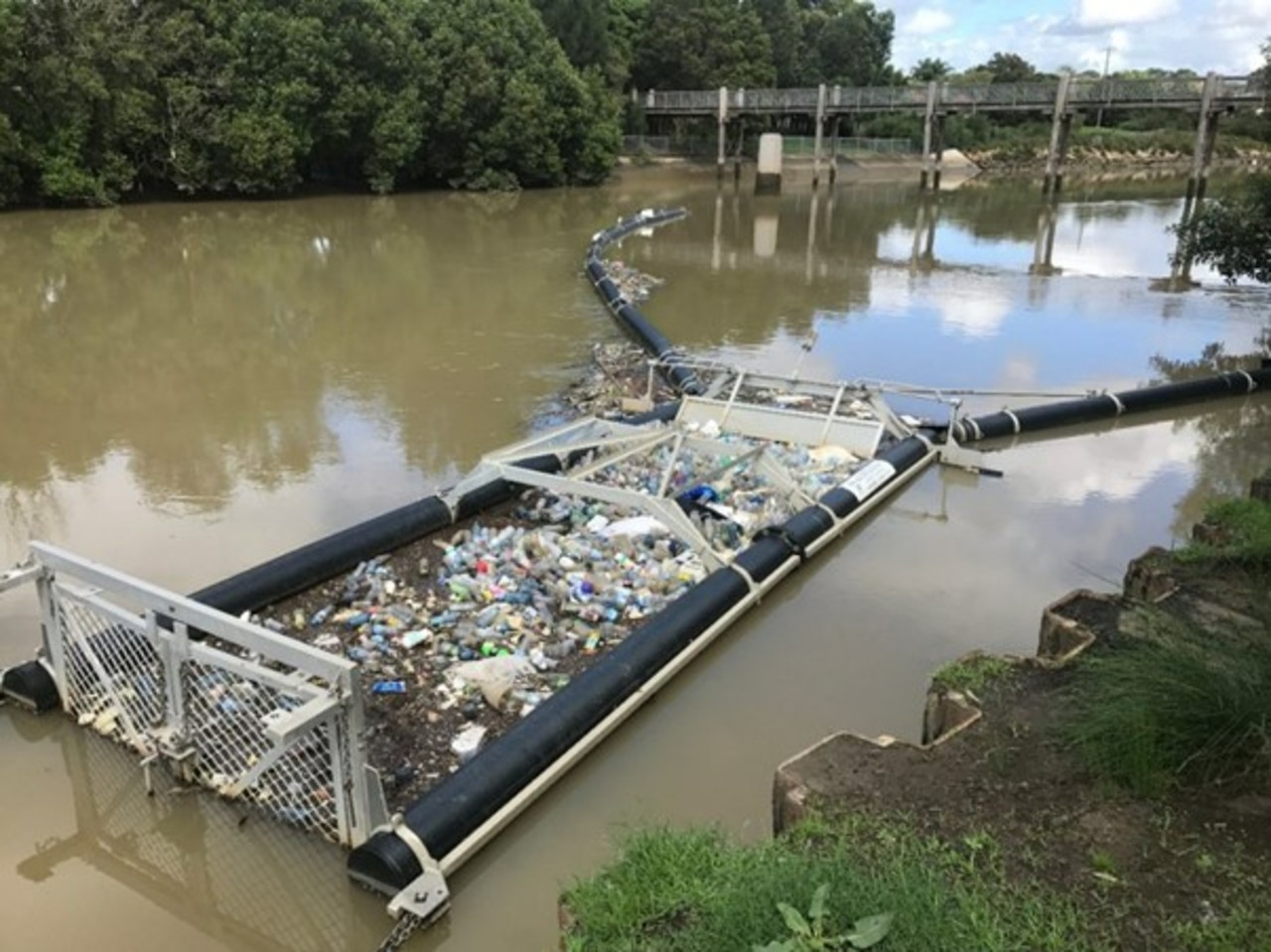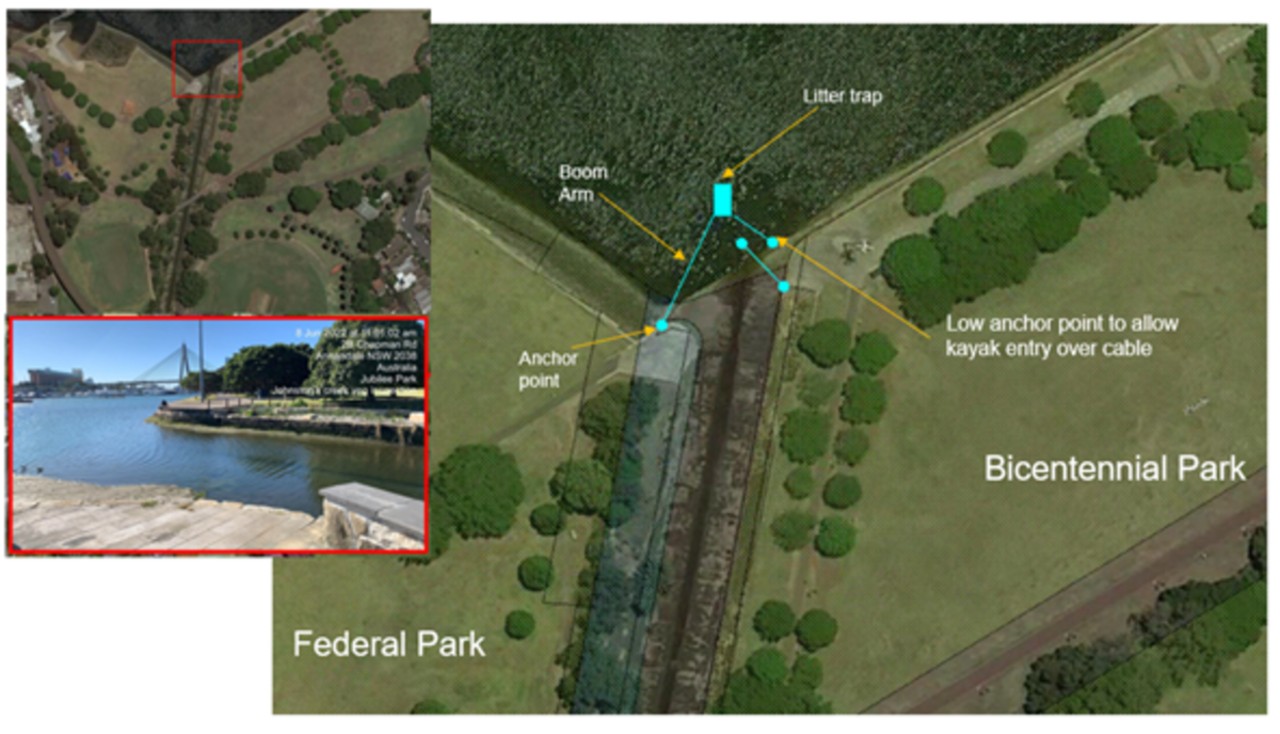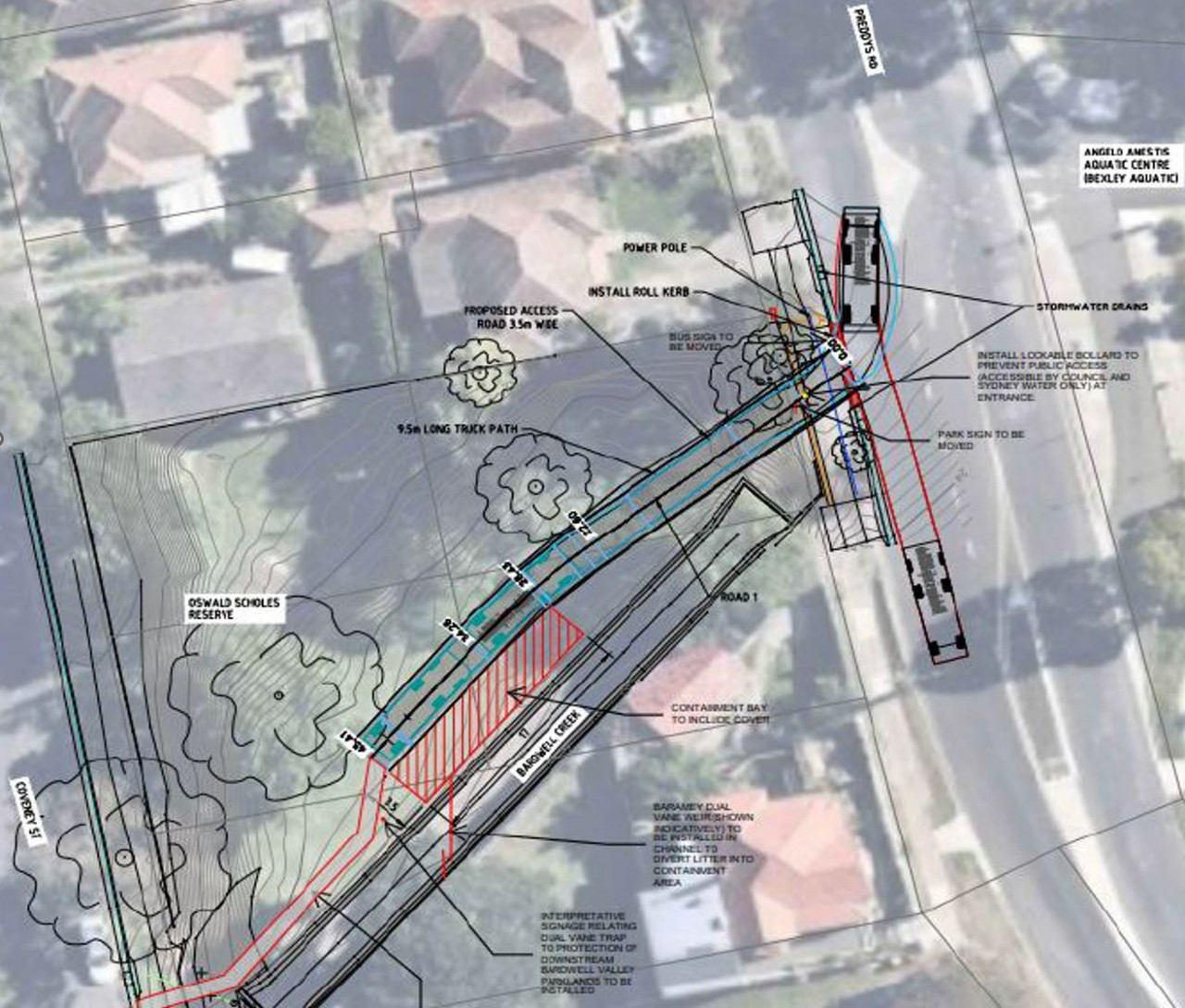Log in
Cleaning up stormwater
We manage, maintain and clean 447 kilometres of stormwater channels and pipes across Greater Sydney. This removes litter and organic waste from stormwater to prevent it from polluting our waterways. We could be cleaning up stormwater near you.
About this project
Unlike wastewater, stormwater isn't treated before it flows into creeks, rivers and oceans. We, and many councils, manage stormwater using stormwater quality improvement devices (SQIDs). SQIDs are designed to catch solids so they can be removed from the water. They come in various forms.
Types of SQIDs
- Trash racks – barriers with bars that catch litter and debris in stormwater channels while letting water flow through. Workers regularly remove the litter to prevent the channel from getting blocked.
- Sediment traps – small, temporary pond-like structures that capture and settle sediment particles from stormwater runoff.
- Floating litter booms – floating barriers made of lightweight plastic pipes are placed in waterways to collect floating trash and plants. They're held in place by chains attached to anchors or poles. These barriers often have a one-way gate and a basket to trap the debris. Workers use a truck with a long arm that has a claw attachment to remove collected trash.
- Gross pollutant traps (GPTs) – Continuous Deflection Separation GPTs catch and hold large debris, litter, grit, sediments and oils. They're usually placed underground, where stormwater flows to the GPT before re-entering the channel. Workers use a vacuum truck or a truck with a claw to clean the GPT and remove the trapped pollutants.
- Silt pits (or sediment basins) – keep sediment in one place instead of letting it flow through the channel. A low barrier lets stormwater pass downstream but stops the silt. These pits need to be cleaned regularly to prevent the silt from overflowing into the channel.
- Constructed wetlands – water flows into a large man-made wetland that encourages settling, biological treatment and fine filtration. Plants enhance the treatment and provide habitat for wildlife and fish.
In the past 20 years, we've installed over 70 SQIDs. These devices have helped remove over 35,000 cubic metres of litter and organic waste as well as 39,000 tonnes of sediment from stormwater before it reaches our waterways.
Benefits
SQIDs capture:
- litter, such as plastic bottles, food packaging, and cigarette butts left on the streets
- oil and grease from vehicles
- soil, leaves and twigs
- animal and bird droppings
- chemicals, including nutrients, resulting from activities like car washing.
We send this waste to a water resource recycling facility, where it's separated into water content, recyclables and general waste. The water is transferred to the wastewater network and the recyclable organic material is used in the farming and landscape industries. This process reduces landfill and extends the useful life of the processed materials, contributing to a circular economy.
Keeping SQIDs clean
We own SQIDs and are responsible for their maintenance and cleaning. The method used to clean them varies by type of device and access conditions. Litter booms are usually cleaned using a grab truck with an outreach arm. Trash racks are raked to remove litter and debris before transferring to a truck. Sediment basins and GPTs are usually cleaned using a truck fitted with vacuum equipment. During the vacuuming of GPTs and sediment basins, excess water is separated from the extracted solids and diverted into a nearby wastewater system. Pressure washing is undertaken during comprehensive cleaning to remove tough debris stuck to the SQIDs.
SQIDs are cleaned and maintained at different frequencies based on factors such as the type of device, flow of the channel, and land use of the area surrounding the channel. All of our SQIDs are placed on a cleaning routine with frequencies ranging from weekly to quarterly. In addition to routine cleans, some SQIDS undergo more comprehensive cleaning every 6 months to 2 years.
Upgrading SQIDs
Like all infrastructure, SQIDs have a limited service life. Along with regular wear and tear of the components that make up the devices, most SQIDs are subject to constant water pressure, as they're situated directly in stormwater channels. Over time, parts deteriorate and will require replacing. The volume of water and amount of debris flowing in stormwater channels can also vary over time due to changes in land use and other factors, and some SQIDs may need to be relocated, removed or replaced with a more suitable design as a result. It is also important to maintain the serviceability of our SQIDs to ensure our contractors are safe when cleaning them.
How you can help
You can help us keep our waterways clean by:
- throwing all rubbish in the bin
- washing cars on the grass instead of hard surfaces so detergents wash into the soil rather than stormwater drains
- sweeping leaves, dirt and rubbish away from gutters
- making sure your gardens have good borders so soil doesn't wash into stormwater drains
- putting grass clippings in the compost bin or on the garden
- picking up your pet's droppings and putting them in a bin
- disposing of chemicals, pesticides, paints and oils using your local council's chemical clean-out service.
If you see something that could be hazardous to the community or environment, call 13 20 90 24/7 to report the concern.
We work closely with local councils and other agencies to improve the health of our waterways, provide opportunities for stormwater reuse, and protect people and properties from flooding.
Project updates
Johnstons Creek between Federal Park, Annandale, and Bicentennial Park, Glebe
We've finalised our preliminary concept design and plan to install a SQID near Johnstons Creek and Rozelle Bay.
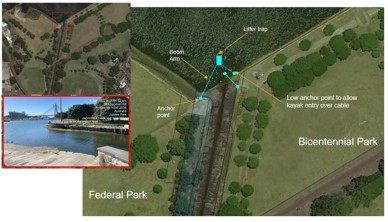
Bardwell Creek at 12 Coveney Street, Bexley North
We've been working with Bayside Council to identify options for improving the waterway health at Bardwell Creek.
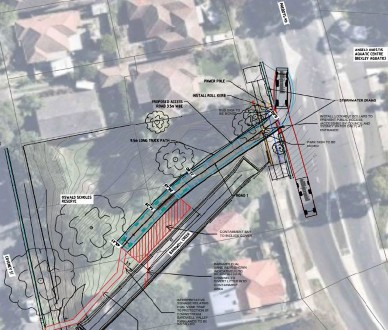
Surrey Street Reserve and Elizabeth Street Park, Guildford
We're proposing the development of a constructed wetland within Surrey Street Reserve and Elizabeth Street Park in Guildford.
Deakin Park, Silverwater
Deakin Park has been identified as a site for a water quality improvement project for the Parramatta River catchment incorporating the existing stormwater channel.
Photos and videos
